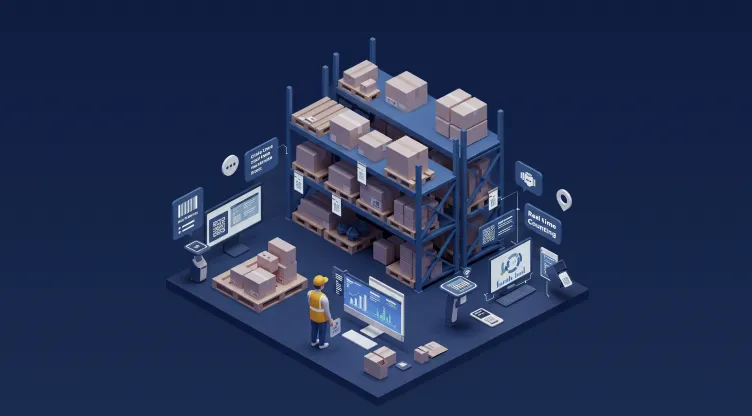Returns for Electronics: Testing, Repair, Restocking, and Handling Higher-Value Items

Table of Contents
Introduction
Returns in the electronics sector pose unique challenges due to high product value, technical complexity, and warranty management. Unlike simple retail returns, electronics require thorough testing, repairs, refurbishment, and careful restocking. Businesses need a well-structured reverse logistics management process to reduce losses and improve customer trust.
In this guide, we explore how businesses can optimise their reverse logistics strategies to handle electronic returns efficiently, covering testing, repairs, restocking, and dealing with high-value items.
Understanding Reverse Logistics in Electronics
Reverse logistics refers to the process of moving goods from their final destination back to the manufacturer, retailer, or a third-party handler. In electronics, this can include product recalls, defective item returns, refurbishments, and recycling.
Key elements of reverse logistics in electronics include:
- Product Testing & Quality Assurance – Verifying functionality and diagnosing faults.
- Warranty Management – Assessing whether a product qualifies for repair, replacement, or refund.
- Repairs & Refurbishment – Fixing minor defects or repackaging used electronics for resale.
- Restocking & Reselling – Determining if an item can be resold as new, refurbished, or at a discount.
- Recycling & Disposal – Responsible e-waste handling for non-repairable products.
A well-structured reverse logistics management system ensures reduced operational costs and improved customer retention.
Testing Returned Electronics
Why Testing Is Critical
Testing is the first step in managing electronic returns. Without proper diagnostics, businesses risk reselling faulty items or incurring unnecessary repair costs.
Key Testing Procedures:
- Functional Testing – Checking if the device powers on and performs as expected.
- Software & Firmware Checks – Ensuring there are no software malfunctions or outdated firmware issues.
- Battery & Charging Tests – Identifying degraded batteries or power-related faults.
- Component-Level Inspection – Using diagnostic tools to assess chips, screens, or circuit boards.
Retailers and manufacturers must integrate automated testing tools to speed up the process and reduce labour costs.
Best Practices for Testing Returns
- Implement a triage system to classify products as faulty, repairable, or eligible for restocking.
- Use AI-powered diagnostics to detect common issues quickly.
- Maintain a returns tracking system to log test results and streamline processing.
Repair and Refurbishment
Repairing vs. Refurbishing
While repairs involve fixing specific components, refurbishment ensures the product is restored to a near-new state.
Steps in the Repair Process:
- Diagnose the fault – Determine if the issue is hardware or software-related.
- Assess warranty status – Decide if the repair should be free, discounted, or chargeable.
- Replace or fix components – Swap out damaged screens, batteries, or circuit boards.
- Reassemble & test – Ensure full functionality before sending it for resale.
Refurbishment Includes:
- Cosmetic Improvements – Cleaning, replacing casing, or polishing surfaces.
- Software Resetting – Wiping personal data and reinstalling software.
- Packaging – Adding new accessories or repackaging in factory condition.
Well-managed warranty management helps businesses reduce costs by prioritising repairable items instead of issuing refunds or replacements.
Optimising the Repair Process
- Use modular repairs to make servicing quicker (e.g., swapping entire motherboards instead of fixing individual chips).
- Partner with certified repair centers for specialised fixes.
- Provide self-repair kits for minor defects, reducing logistics costs.
Restocking and Reselling
Restocking electronics isn’t as simple as placing the product back on shelves. The product must be categorised into different conditions:
1. New Condition – Unopened, with intact packaging, eligible for full resale.
2. Open Box – Customer opened but unused, often resold at a slight discount.
3. Refurbished – Repaired and tested, resold with a warranty but at a lower price.
4. Used / Pre-owned – Functioning but with visible wear, usually discounted heavily.
5. For Parts / Scrap – Non-functional items stripped for components or e-waste recycling.
Best Practices for Restocking
- Implement real-time stock tracking to ensure accurate inventory levels.
- Use barcoding or RFID to track each returned product’s condition.
- Offer graded reselling categories (e.g., A-grade for lightly used, B-grade for moderate wear).
Platforms like Amazon Renewed and Best Buy Open Box have leveraged these strategies to sell returned electronics profitably.
Handling High-Value Electronic Returns
Luxury and high-value electronics (e.g., flagship smartphones, gaming laptops, high-end cameras) require special handling due to their cost and sensitivity.
Key Challenges:
- Fraudulent Returns – Customers returning fake or swapped products.
- Tampering & Damage Risks – Mishandling during the return process.
- Security & Data Privacy – Ensuring all customer data is wiped from devices.
Solutions for High-Value Returns:
- Use tamper-proof seals and unique serial number tracking.
- Require photo or video evidence before processing a return.
- Implement in-store return verification for luxury electronics.
- Offer extended warranties or protection plans to reduce return rates.
Using reverse logistics automation, retailers can detect fraud patterns and flag high-risk return cases.
The Role of Technology in Reverse Logistics Management
Companies like Omniful provide end-to-end reverse logistics solutions, ensuring smooth tracking, warranty verification, and return processing.
Key Technologies Used in Reverse Logistics:
- AI-Based Testing – Automatically diagnosing faults in returned items.
- Blockchain for Warranty Management – Securing tamper-proof records of product history.
- IoT & Smart Labels – Tracking location and condition during transit.
- Machine Learning – Predicting return trends and optimising restocking.
Investing in reverse logistics technology helps companies minimise losses and improve resale value.
Conclusion
Managing returns for electronics requires a structured approach covering testing, repairs, restocking, and secure handling of high-value items. By implementing reverse logistics management, businesses can reduce losses, enhance customer satisfaction, and increase profitability.
A well-optimised warranty management system and smart restocking practices further ensure that returned electronics are efficiently reintegrated into the supply chain.
As consumer demand for refurbished and pre-owned electronics rises, retailers and manufacturers that refine their reverse logistics strategy will gain a competitive advantage in the evolving e-commerce landscape.























